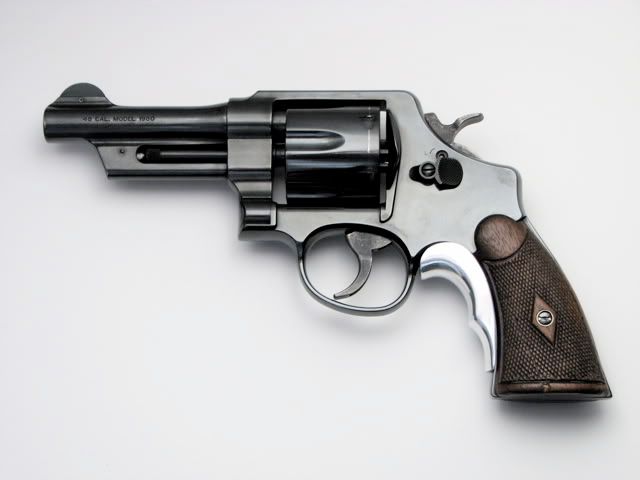Starting out with firearms in a caliber of this size can sometimes be a bad thing.
Some folks don't like the recoil of 45 ACP, and it can make you "flinchy" if you let it; then you'll never get good results.
It causes some shooters to hesitate, get fearful, and flinch anticipating the recoil while others will rush through shooting to make the pain go away faster.
No matter how subconscious, that flinch or hurried shooting will never yield good results.
Basically, if the barrel is OK (i.e not pitted or worn smooth), and the sights are functional, once you get a good grip, watch your trigger squeeze and don't let the report/recoil affect you, great results can occur.
That's really it: getting a good drip on the revolver and paying attention to the fundamentals equals good results.
Mostly you have to learn and practice good habits, over and over, until you become consistent with what you are doing.
That's not just me saying that, Jerry Miculek (himself, a S&W pro) has a good tutorial on the subject and it is what I watched before I went out to plug away.
I still reference it now and then because good marksmanship is a perishable skill. If you don't use it, you'll lose it.
Here's a link to the tutorial:
http://www.myoutdoortv.com/pdk/web/smit ... J0KNWQYqM4
The proof of these pointers is in the paper though. Here are my results (fired and recorded at normal pistol range) after watching and applying the above information. The circled holes with numbers indicate the firing iteration: 1st 6 rounds, 2nd 6 rounds etc. The numbers with an "x" indicate double (2x) or single (1x) action used in firing that group.
Mostly shot via double action:

Mostly shot via single action:

Watch the videos, practice your grip, work on your trigger squeeze and you'll get better.
Dry firing a center-fire revolver like these can't really hurt it. That is not the case with a rim-fire like a .22, where the firing pin can wear out the barrel face.
(Another can of worms, but have at it:
http://www.thehighroad.org/showthread.php?t=86922)
If you really want something in there for the hammer to fall on, invest in some snap caps.
Personally I don't like the idea of fake rounds, or "dummunition" for practice.
Why? Well, I know a firearm is unloaded and safe for such practice if I check and see nothing but air in the chamber, magazine, cylinder.
I can invest in a new firing pin if one breaks in a firearm.
A misfire from a misplaced round is more cost than I'm willing to wager for some fundamentals practice.






















